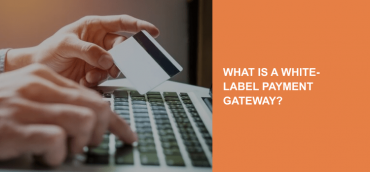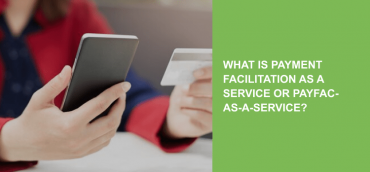ACH payment processing is taking quite a hit. According to the National Automated Clearinghouse Association (Nacha), Q1 2019 ACH Network Volume rose up to 5.8% over Q1 2018. Implementing ACH payments is an excellent investment for 2020. However, the majority of merchants struggle to do so. To simplify it, we provide the 9-step complete guide to ACH payment processing for your business.
What is ACH?
ACH is the Automated Clearing House network. It allows electronic payments and automated money transfer. ACH enables funds transfer without using credit cards, paper checks, and wire transfers. Automated Clearing House only supports eCheck payments.
How does ACH network work?
The ACH system comprises computers, working jointly, to process payments automatically. Neither merchant nor a customer has to process the payment manually. ACH is a so-called “batch” processing system that automatically processes millions of transactions at the end of the day.
What is an ACH transfer?
An ACH transfer is an electronic, bank-to-bank transfer led by the Automated Clearing House network. Here are the four types of ACH transfers:
- external funds transfer;
- person-to-person payment;
- bill payment;
- direct deposit from the employers and government benefit programs.
The complete guide to ACH payment processing for your business.
There are nine key things to know to process ACH payments successfully:
1. Analyze your GEO to see whether you need ACH billing
Your GEO matters. ACH payment processing functions in the U.S only. There is no need to provide ACH payments if you are not targeting States.
2. Use the golden rule of ACH payment processing
The golden rule of ACH says the larger your average check amount, the better the savings. Another key point is your average check amount. While credit card transactions demand a percentage per transaction fee, ACH payments require s a flat fee only. Usually, it is $0.60, regardless of the total sum. If your average check amount is high, it is more than reasonable to provide eChecks. However, if you sell low-cost items, ACH might become an unnecessary burden.
To count the average check amount of yours, divide the total sum of products’ cost into the number of products. Imagine that your average check amount is $100. A usual credit card transaction fee is 2,9%+30 cents. Thus, once a consumer purchased your $100 product via card (Visa or MC), you pay $3.2+30 to a PSP and save all the rest ($96.8).
In ACH payment processing, you’ll pay $0.60 to a PSP and keep $99.6. The difference isn’t impressive. Well, think of those merchants who run antique agencies. Their average check amount might exceed $10 000. ACH payment processing is very beneficial for them.
3. Understand the difference between ACH billing and credit card payments
Understanding that point is crucial. Though both ACH and credit card payments are charged from the customer’s bank account, the form of payment differs tremendously. While paying via a credit card, a consumer simply prints down his/her credit card. Then, he/she validates the transaction. And that’s it.
In ACH billing, a consumer allows you to make a withdrawal from the bank account by providing a personal routing and account number. The process is completed automatically once the consumer presses “Submit.” The confirmation can be done in various ways, according to the entry class you choose.
5. Understand the types of ACH transactions
You need to understand the four basic types of ACH transactions. In banking, these types are called the entry classes:
- PDD: That is when a client allows you to withdraw funds from his/her account by providing written permission. Keep in mind that writing a check is not the same as writing permission when conducting a PDD transaction.
- WEB: The WEB ACH is when a client submits permission electronically by filling in the website’s form.
- TEL: With this type of transaction, the consumer gives permission to debit his funds over the phone. When using the TEL ACH payment, make sure to record the conversation. That is needed for verification purposes.
- ARC and BOC: That is when a written check does constitute permission.
Once you have familiarised yourself with all the entry classes, make sure to choose what fits your business needs best.
6. Get ready to wait for the eCheck to arrive
Unlike credit card payment processing, which takes three days, ACH requires five days to process. Understanding that will help you to forecast the cash flow as well as to predict the regularity of payouts.
7. Find a PSP that supports both ACH and credit card payments
Read that point carefully as it affects your budget a lot. ACH transaction fees are debited apart from other transaction fees. That means you can’t use the one you already have (or are planning to have) for Visa and MC processing. You need a separate merchant account to accept ACH payments. The best way is to find a PSP that offers both a credit card merchant account and an ACH merchant account. Otherwise, you will have to pay extra for maintaining two different payment gateways. That’s a waste of both money and time.
Finding a PSP that accepts ACH is not enough. A payment processor of yours has to fit your business needs. Analyze the fees it offers, the price of set up and recurring billing. Also, make sure that it covers your target-areas and provides a wide range of payment methods. Besides ACH billing and credit card payment processing.
8. Apply for a merchant account
Once you have analyzed all the pros and cons, you need to choose a PSP and apply for a merchant account. Check out the top five payment gateways in 2020.
Then, the PSP of your choice will provide you with the application and a list of documents required. Usually, you need to supply the following:
- Certificate of Incorporation;
- Local documents as per company jurisdiction which displays company directors and owners;
- Utility bill/Bank statement/Rental agreement under corporate names proving company location;
- Valid ID copies for all company directors and owners.
9. Take measures to avoid NTF transactions
That’s the core pitfall of ACH payment processing. When processing a payment, the system only checks whether the account exists at the routing number. It does not review if there is a sufficient amount of funds available for the successful purchase. That always leads to NTF (not enough funds) transactions. The only way to avoid NTF is to set up a check guarantee or a check verification. That will cost you extra.
It is also essential to use fraud and chargeback prevention software. Chargeback ratio of more than 1% puts your business at risk. From a $25 000 fine to the closure of your merchant account, chargebacks are dangerous. Do not ignore that fact when choosing a PSP. All the trusted companies hold PCI DSS certificate and do offer fraud and chargeback prevention. Check out how fraud and chargeback prevention works to strengthen your financial safety.
Summary
All in all, ACH payment processing is not as hard as it seems. Analyze your GEO, familiarize yourself with all the pitfalls, find the right payment gateway, apply for a merchant account, and get ready to grow your revenue. Once you collect all the documents, nothing prevents you from business success.








